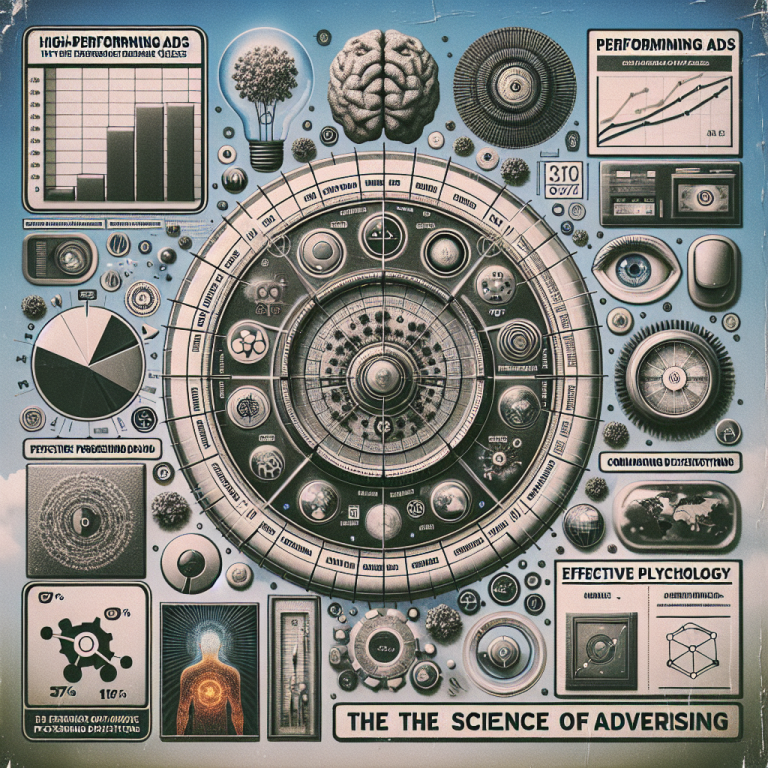The Advertising Blueprint That Every Small Business Needs to Follow
Define Your Target Audience
Understanding Your Customers
When I first started diving into advertising for my small business, I quickly realized that defining my target audience was absolutely crucial. It’s kinda like throwing a dart blindfolded; you’re just guessing without knowing who you’re aiming for. I spent hours crafting detailed personas of my ideal customers, right from their age and interests to their shopping behaviors.
This journey helped me see things from their perspective. What do they need? What problems do they face? Getting into their shoes not only guided me in crafting my messages but also influenced where I spent my advertising dollars. Trust me, understanding your customers can make or break your advertising strategy.
Once I pinpointed my audience, everything became clearer. The platforms I chose, the messaging style, and even the visuals—it all lined up! So, do yourself a favor and invest time in understanding your target market; it’s the first step in building an effective advertising blueprint.
Segmenting Your Audience
Not all customers are created equal, right? That’s why segmentation is super important! Instead of trying to speak to everyone, I focused on breaking down my audience into smaller chunks based on common characteristics. This way, I could create tailored messages that truly resonated with each segment.
For instance, I might have one segment that’s tech-savvy millennials and another that consists of older, more traditional customers. Each segment needs a different approach. Crafting bespoke messages made my advertising much more personal, and people responded positively. It’s all about hitting the right notes!
If you haven’t started segmenting yet, now’s the time! It leads to stronger engagement and, ultimately, better conversions.
Researching Your Competitors
Knowing your audience is fantastic, but equally important is knowing your competition. By checking out what’s working (and what’s not) for others in your niche, I gained invaluable insights. I examined their ads, branding, and even their customer reviews to understand their strengths and weaknesses.
This knowledge helped me avoid some common pitfalls and also inspired me to think outside the box. I realized that while it’s important to learn from others, carving out my unique selling proposition was what would help me stand out. Analyzing competitors can act as a roadmap to avoid dead ends on your advertising journey.
Surprisingly, a little healthy competition can light a fire under you! So, take the time to analyze, get inspired, and find your own unique voice in the crowd.
Create an Engaging Message
Crafting Compelling Content
Once I had my audience and competitive understanding nailed down, it was time for the fun part: creating the message! I found that storytelling was a powerful tool in making my ads stick. Instead of just listing features, I focused on how my product solves a problem or enhances my audience’s life.
Emotion plays a huge role in buying decisions, so I also incorporated relatable anecdotes. My goal was for customers to see themselves in my messages. Measuring the emotional impact of my content really made a difference in how people reacted.
Don’t underestimate the power of a good story! Think about how you can connect with your audience on a deeper level. That’s where the magic happens!
Using Simple Language
Another lesson I learned along the way is that simplicity is key. The last thing I wanted was my message to get lost in jargon or complicated phrases. When I began using simple, everyday language, my ads became much more relatable. My audience didn’t need a dictionary to understand what I was talking about!
I encouraged myself to be authentic. If I wouldn’t say it in a casual conversation, I tossed it out. This approach led to a more genuine connection with my audience. When people can relate, they’re more likely to respond positively.
So, keep it straightforward! Less is often more when it comes to crafting an engaging message.
Call to Action
Okay, so you’ve got a killer message, but what’s next? This is where a strong call to action (CTA) comes into play. I made it a priority to tell my audience exactly what I wanted them to do. Be it signing up for a newsletter or making a purchase, a clear CTA ensures that they know how to engage with my brand.
The CTA should be compelling and create a sense of urgency; something like “Don’t miss out!” or “Grab it before it’s gone!” was a huge success in my campaigns. It prompts immediate action, which is what we’re really after.
A well-crafted CTA can be the difference between someone scrolling past your ad or clicking through. So, go on, make that call to action stand out!
Select the Right Channels
Choosing the Right Media
Now that I had my audience and message clear, it was time to figure out where to promote my ads. Different audiences hang out on different platforms, and selecting the right channels proved to be a game-changer for me. I spent time researching trends and demographic information to find which platforms best suited my target market.
For instance, if you’re targeting younger consumers, social media platforms like Instagram and TikTok might be your best bet. On the other hand, LinkedIn could be more effective for B2B marketing. Choosing the right media allowed me to maximize my return on investment and reach the audience where they were most active.
So get savvy with your media choices! Don’t be afraid to experiment and analyze what works for your business, as it’s pivotal for successful advertising.
Budgeting Wisely
Choosing your channels also comes with the need to budget wisely. When I was starting out, I had to be realistic about my financial capacity. Not every advertising channel is created equal, and I learned that some give better returns than others. It was crucial for me to map out a budget that aligned with my goals.
I made a habit of tracing my spending and regularly checking in on whether my campaigns were performing well. This practice led me to make informed decisions about where to scale back or where to invest more. Staying on top of budget management is just as important as the channels I chose.
Always remember to account for flexibility in your budget. Markets can change quickly, and adapting your spending to align with performance is key!
Leveraging Analytics
Finally, I can’t stress enough how important leveraging analytics is. Not long after I started advertising, I realized that data was my best friend. By analyzing campaign performance, I could track engagement, clicks, and conversions.
This allowed me to see what was resonating with my audience and what wasn’t. I learned to adjust my strategy based on real numbers rather than gut feelings. Insightful analytics helped me refine my approach to ensure I was getting the most bang for my buck!
Don’t shy away from diving into the numbers. They can provide the guidance you need to improve your future campaigns!
Evaluate and Adjust Your Strategy
Continuous Improvement
The final piece of the puzzle is all about evaluation and adjustment. I discovered that advertising isn’t a “set it and forget it” endeavor. It’s an ongoing process of learning and improving as you go. Regularly evaluating my strategies helped me identify what worked and what needed a fresh approach.
I created a schedule for myself to review ad performance, gather feedback, and assess overall results. This practice not only kept me engaged but ensured I was always moving toward improvement. Trust me, it’s okay to pivot if something isn’t working.
Continuous improvement is the name of the game in advertising, so don’t hesitate to adapt your blueprint as you learn new things!
Seeking Customer Feedback
Another effective way to evaluate your advertising strategy is through customer feedback. After running a campaign, I found it incredibly valuable to collect insights from my customers. Surveys, direct communication, or even social media comments can give you a wealth of information.
This feedback loop allows you to revisit your message and understand how your audience is resonating with it. Did they find it engaging? Was it clear? Feedback from current or potential customers can direct your next steps significantly.
Don’t be afraid to ask for opinions! Your audience will appreciate your desire to improve, and insightful feedback can reveal hidden gems of information you might not have considered.
Staying Updated on Trends
Finally, always keep your finger on the pulse of advertising trends. The digital marketing landscape is ever-evolving, and being aware of new platforms, technologies, and customer preferences is essential. I made it a habit to read industry news and follow thought leaders to stay in the loop.
Adapting to new trends can unearth fresh opportunities for innovative advertising that resonates with your audience. Forgetting this can leave your campaigns stale, and nobody wants that when they’re trying to connect with customers.
So, don’t be a dinosaur! Be proactive in keeping your skills and knowledge updated!
Conclusion
Creating an effective advertising blueprint is no small feat, but by focusing on your audience, crafting a compelling message, selecting the right channels, and being open to continuous improvement, you’re already on the right track. Remember, it’s all about making genuine connections and delivering value! You’ve got this!
FAQs
What should I prioritize when creating an advertising strategy?
Start by defining your target audience. Know who you are trying to reach, as it informs every other aspect of your strategy.
How often should I evaluate my advertising campaigns?
Schedule regular evaluations, perhaps monthly or quarterly, to check on your performance and make necessary adjustments. Continuous improvement is vital!
What role does social media play in advertising?
Social media is a powerful tool for connecting with your audience. It allows for targeted advertising and direct engagement, making it essential for modern advertising strategies.
How can I gather customer feedback effectively?
You can gather feedback through surveys, direct interactions, and monitoring social media engagement. Just ask your audience what they think—they often have insightful opinions!
What if my advertising campaigns aren’t working?
Don’t panic! Analyze the data, gather feedback, and adjust your strategy as needed. Sometimes a small change can make a big difference!









